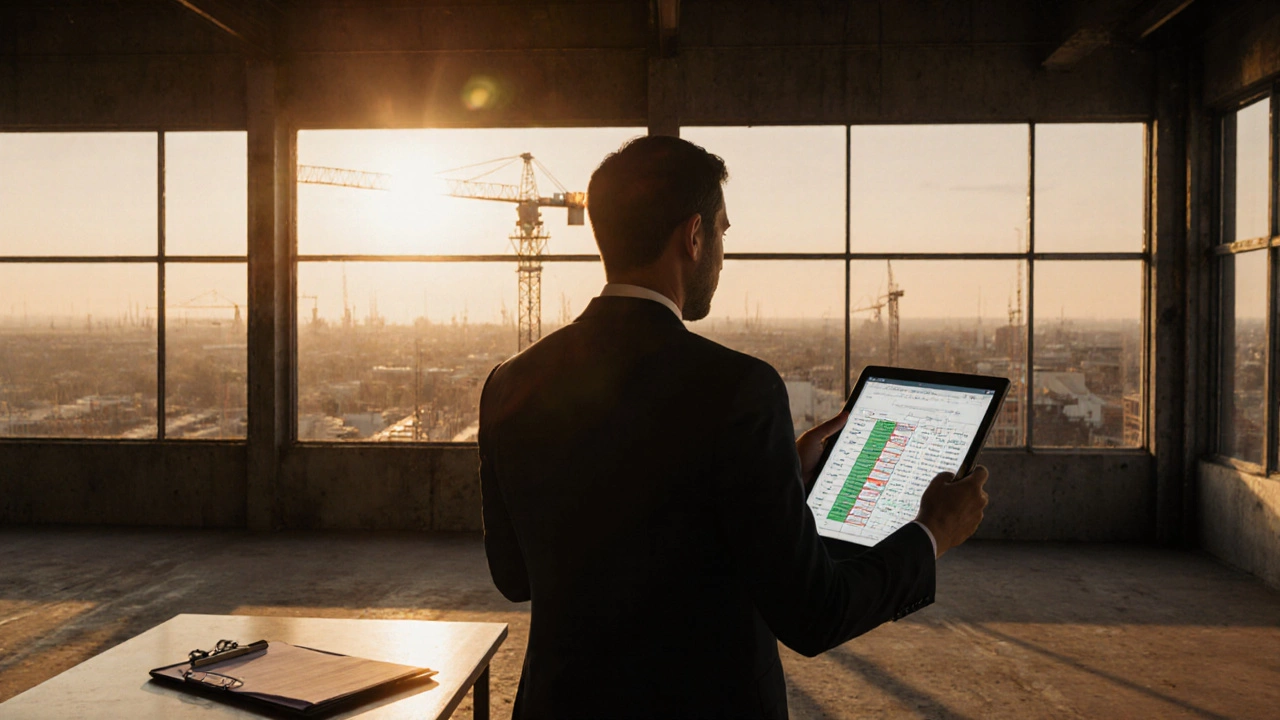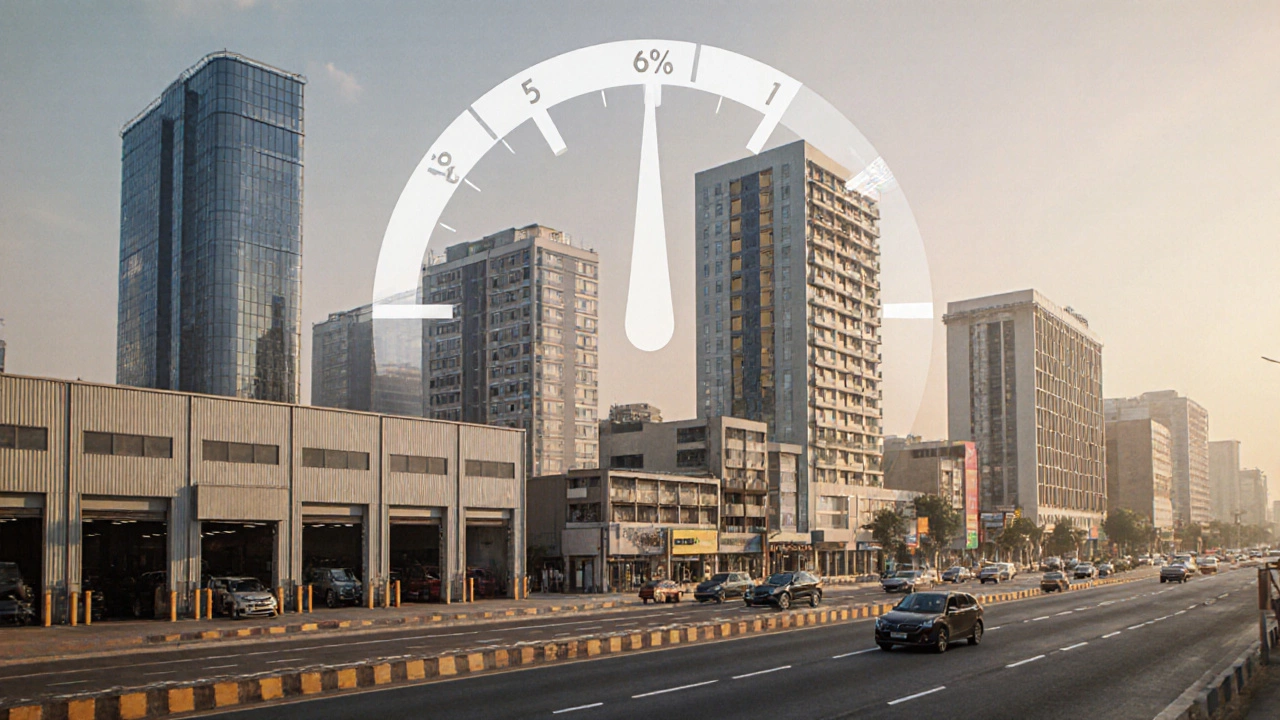Commercial Property ROI Calculator
Input Your Property Details
Results & Analysis
Enter your property details and click Calculate to see your results.
Key Takeaways
- A solid commercial property ROI typically falls between 6% and 12% after tax, depending on market and asset type.
- Cap rate, cash‑on‑cash return, and IRR each tell a different part of the investment story.
- Location, tenant credit, lease length, and operating expenses drive the final ROI figure.
- Run the numbers with a simple spreadsheet: NOI, purchase price, financing costs, and taxes.
- Use the checklist below to spot red flags before you sign a purchase agreement.
When you hear investors say "a good return on investment for commercial property," they’re really talking about a bundle of metrics that measure cash flow, risk, and growth potential. commercial property ROI isn’t a one‑size‑fits‑all number; it shifts with the type of building, the local market, and the financing structure you use.
What Exactly Is Return on Investment?
In real‑estate lingo, Return on Investment (ROI) is the percentage gain or loss on an investment relative to the amount of capital you put in. In practice, ROI can be calculated in several ways, each highlighting a different risk profile.
Core Metrics That Make Up Commercial ROI
The most common trio of metrics investors use are:
- Capitalization Rate (Cap Rate) represents Net Operating Income divided by the purchase price, expressed as a percent. It shows the “as‑is” return you’d earn without financing.
- Cash‑on‑Cash Return measures the cash flow you receive each year divided by the cash you actually invested (down payment + closing costs). It captures the impact of debt.
- Internal Rate of Return (IRR) estimates the annualized return over the holding period, including appreciation and tax benefits. It’s the most forward‑looking figure.
Simple Step‑by‑Step ROI Calculation
- Determine the Net Operating Income (NOI). Add all rental income, subtract vacancy, property‑management fees, insurance, taxes, and routine maintenance.
Example: A 10,000sqft office building rents for $20 per sqft, giving $200,000 gross. After 5% vacancy ($10,000) and $30,000 in operating costs, NOI = $160,000.
- Find the Purchase Price (including acquisition fees). In our example, the buyer pays $2.5million plus $50,000 in due‑diligence costs, total $2.55million.
- Calculate the Cap Rate as NOI ÷ Purchase Price. $160,000 ÷ $2,550,000 = 6.27%.
- If you’re financing 70% of the price at 5% interest, compute annual debt service (interest + principal). For a 30‑year loan, annual payment ≈ $112,000.
- Subtract debt service from NOI to get cash flow before taxes: $160,000 - $112,000 = $48,000.
- Calculate cash‑on‑cash: Cash invested = down payment + closing costs = $765,000 + $50,000 = $815,000. Cash‑on‑cash = $48,000 ÷ $815,000 = 5.9%.
- Project a 5‑year hold, assume 2% annual appreciation, and estimate tax shields. Feed those numbers into an IRR calculator; you’ll likely see an IRR around 8‑9% for this modest asset.
Typical ROI Ranges by Property Type (2025 Market)
| Property Type | Cap Rate | Cash‑on‑Cash Return | Typical IRR (5‑yr hold) |
|---|---|---|---|
| Industrial (warehouse, flex) | 6.0% - 8.5% | 7% - 10% | 9% - 12% |
| Office (Class B‑C) | 5.0% - 7.0% | 5% - 8% | 7% - 10% |
| Retail (strip malls, stand‑alone) | 5.5% - 7.5% | 6% - 9% | 8% - 11% |
| Multifamily (10+ units) | 4.5% - 6.5% | 5% - 7% | 7% - 10% |
| Specialty (self‑storage, data centers) | 7.0% - 10.0% | 8% - 12% | 10% - 14% |
These numbers come from recent surveys by NCREIF, CBRE, and the National Association of Real Estate Investment Trusts (Nareit). They reflect a market where interest rates have risen to 5‑6% and investors demand higher yields to offset inflation risk.
Key Factors That Move the ROI Needle
Even within a single asset class, ROI can swing dramatically. Keep an eye on these drivers:
- Location quality: Proximity to highways, transit hubs, and growing employment centers boosts rent growth and reduces vacancy.
- Tenant creditworthiness: A triple‑A corporate lease provides stability, while a startup with a short‑term lease adds risk but may command higher rent.
- Lease structure: Triple‑net (NNN) leases push operating costs to the tenant, inflating cash‑on‑cash returns. Gross leases keep costs with the landlord, lowering cash flow.
- Operating expense control: Efficient property‑management contracts, energy‑saving upgrades, and proactive maintenance can improve NOI by 5‑10%.
- Financing terms: Lower loan‑to‑value (LTV) ratios, longer amortizations, or interest‑only periods boost cash‑on‑cash, but increase risk if rates climb.
- Market cycle: In a buyer’s market, purchase prices dip, raising cap rates. In a seller’s market, prices surge and cap rates compress.

Deal‑Evaluation Checklist
Before you say "yes" to a property, run through this quick audit. Tick off each item and note any red flags.
- Confirm the NOI with independent rent rolls and expense statements.
- Verify the Cap Rate matches or exceeds market averages for the asset type.
- Check the tenant mix: at least 70% of rent should be covered by credit‑rated tenants.
- Assess lease expirations: preferably no more than 30% of rent expiring within the next two years.
- Run a cash‑on‑cash scenario with both current financing and a “cash‑purchase” to gauge leverage impact.
- Model a 5‑year IRR with conservative rent growth (2‑3% YoY) and a 2% exit cap rate.
- Run a Debt Service Coverage Ratio (DSCR) calc: NOI ÷ annual debt service; aim for >1.25.
- Review zoning, environmental reports, and any pending capital‑expenditure items.
- Ensure there’s a clear exit strategy: resale, recapitalization, or conversion.
Common Pitfalls and How to Avoid Them
Even seasoned investors slip up. Here are the most frequent mistakes and quick fixes.
- Relying on gross rent alone. Always deduct realistic vacancy assumptions (typically 5‑8% for office, 3‑5% for industrial).
- Over‑leveraging. A 90% LTV may look attractive, but a DSCR below 1.2 can spell cash‑flow trouble if rates rise.
- Ignoring expense inflation. Property taxes and insurance often climb 3‑4% per year; factor those increases into your NOI forecast.
- Assuming rent growth will match inflation. In stagnant markets, rents may flat‑line. Use local market reports from CBRE or JLL for realistic growth estimates.
- Skipping due‑diligence on the tenant's financial health. Request recent financial statements or credit reports for anchor tenants.
Frequently Asked Questions
What is a “good” ROI for a commercial property in 2025?
Most investors target a post‑tax return between 6% and 12% depending on the asset class. Industrial and specialty properties often sit at the higher end, while multifamily and office buildings tend to hover around 6%-9%.
How does cap rate differ from cash‑on‑cash return?
Cap rate ignores financing; it’s simply NOI divided by the purchase price. Cash‑on‑cash reflects the actual cash you earn after debt service, so it’s more sensitive to your loan terms.
Should I prioritize IRR over cap rate?
IRR captures the total return over your holding period, including appreciation and tax benefits. If you plan a long‑term hold, IRR gives a fuller picture. For quick flips, cap rate is more immediate.
What DSCR should I aim for?
A DSCR of 1.25 or higher is considered safe. It means the property generates 25% more NOI than needed to cover debt payments.
Can I achieve a good ROI with a small down payment?
Yes, but expect a lower cash‑on‑cash return and a tighter DSCR. Higher leverage amplifies both upside and risk, so run multiple stress‑test scenarios before committing.
Next Steps for Prospective Investors
Now that you know the benchmarks and the math, here’s how to move forward:
- Identify a target market (e.g., mid‑size Midwest industrial). Pull the latest cap‑rate surveys.
- Gather property‑specific data: rent roll, expense statements, lease abstracts.
- Build a simple spreadsheet with the calculations shown above. Plug in best‑case, base‑case, and worst‑case assumptions.
- Run a sensitivity analysis on interest rates and vacancy. If your cash‑on‑cash stays above 6% in the downside case, you’ve got a buffer.
- Schedule a site visit and meet the current tenants. Their willingness to stay can make or break a deal.
- Consult a tax professional to factor depreciation, 1031‑exchange possibilities, and local incentive programs.
By treating ROI as a suite of metrics rather than a single number, you’ll make smarter, lower‑risk purchases that deliver the returns you expect.






